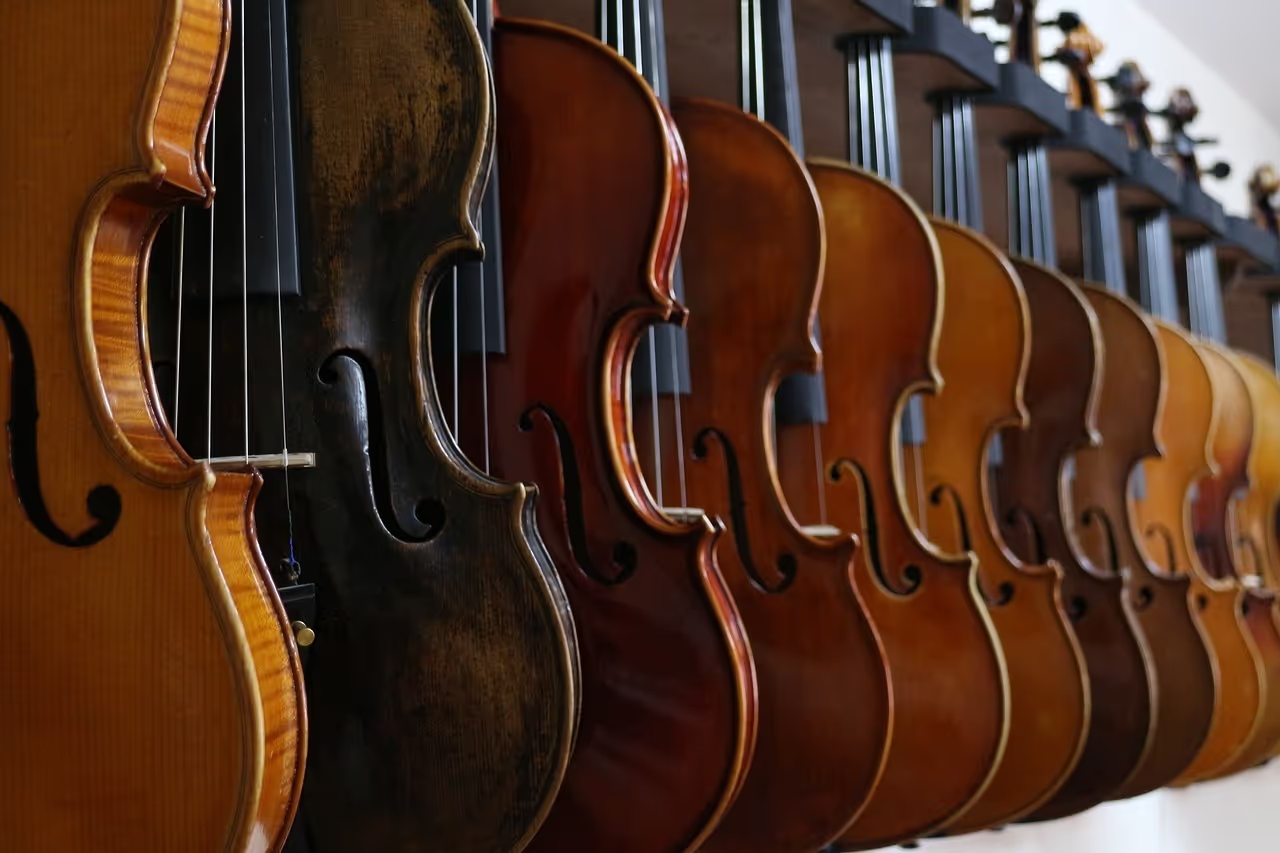Stradivari, del Gesù, Amati: These are the most famous luthiers of all time

Almost everyone knows the name Antonio Stradivari. But what about Giuseppe Guarneri del Gesù or Nicola Amati? Each instrument from the three world-class luthiers from Italy is undoubtedly special in its own way, and fascinates with its unique sound and design. But who are the creators of these works of art and how were the instruments created that today fetch top prices at auctions, adorn the collections of important personalities and are only played by the best musicians?
What makes violins very special
In terms of sound, amateurs may be able to distinguish a mediocre violin from a very good one. But the subtleties that make up a Stradivarius, del Gesù or Amati remain hidden from the ears of most listeners. Musicians, music lovers or instrument collectors, on the other hand, often recognize first-class instruments for their unique beauty and sound. There were also a number of myths and riddles about legendary violins made by great masters. The question of the construction principle of a Stradivarius and the source of its sonic beauty has been preoccupying science for decades and has only produced some answers in recent years. It was often assumed that, in addition to the wood used, the reddish-brown lacquer with a fine yellow tinge could also be responsible for the exceptional sound quality of the instruments. Die secret formula of the paint Researchers were only able to decipher a few years ago. Stradivari probably first sealed the wood with oil. A slightly tinted oil-resin layer was applied over it. Stradivari then added red pigments such as iron oxides and an anthraquinone dye to the top layer.
The wood treatment used by the great masters was also researched and brought to light astonishing results. One Study at National Taiwan University in Taipei confirmed that the old masters treated the violin wood with chemicals that permanently changed the structure of the wood. This ensured, for example, better durability, stability or richness of sound. It is plausible, for example, that the material was placed in highly concentrated aluminum-containing solutions. Alum, a potassium aluminum sulfate, is suitable for this purpose. The aluminum atoms cross-linked the individual wood fiber molecules together — this stabilized the wood from within. Samples of Stradivari violins were found in high amounts of sodium, chlorine and potassium, which indicates treatment with potash or common table salt. With Giuseppe Guarneri del Gesù, the researchers also detected calcium, which would speak for a treatment with lime. The old master violin makers are therefore experimenting with all sorts of chemical compositions that probably no one can exactly reconstruct.
The top 3 of the most famous violin makers
The spheres of the world's most expensive and legendary violins are dominated by three grandmasters from Cremona, Italy: Antonio Stradivari, Giuseppe Guarneri del Gesù and Nicola Amati. Being able to play their stringed instruments is a special honor for the world's greatest violinists, and well-heeled collectors put millions of dollars on the table for these rare musical treasures.
- Antonio Stradivari (1644 to 1737) is considered one of the most famous violin makers of all time. About the Stradivari's career is little known. It is assumed that he may have done a carpentry apprenticeship before he began making instruments. Nicola Amati could have been an important teacher here. Stradivaris instruments are known for their unique sound and high quality. Over the course of his life, he made more than a thousand stringed instruments, of which around 600 violins are still preserved. He died in 1737, but his legacy lives on. Probably the most expensive copy to date is the Lady Blunt Stradivarius. It was built in 1721 during Stradivari's golden period and is highly regarded for its exceptional tonal qualities and exquisite craftsmanship. However, Stradivari's Macdonald viola would be much more expensive. In 2014, Sotheby's wanted to auction them for the equivalent of 45 million euros - but there was no buyer.
- Giuseppe Guarneri del Gesù (1698 to 1744) - also known as “del Gesù” - is probably the most famous violin maker after Stradivari. His instruments are appreciated for their warm and powerful sound. Since his grandfather Andrea Guarneri had already learned the trade from the luminary Nicola Amati, Giuseppe was practically born with the art of making the violin. Compared to his contemporary Stradivarius, Guarneri's work appears rather modest from a quantitative point of view: It is estimated at only around 100 to 200 violins, which explains why stringed instruments such as the “Vieuxtemps Guarneri “violin are so expensive: With a selling price of around 16 million dollars, the “Vieuxtemps Guarneri” is considered the most expensive violin ever sold.
- Nicola Amati (1596 to 1684) was the grandson of Andrea Amati and a member of the famous Amati family of luthiers in Cremona. He continued and refined the family's violin making tradition by making significant contributions to the design and construction of violins. His instruments are known for their exceptional craftsmanship and beautiful sound. Nicola Amati is often regarded as a teacher of Stradivari and del Gesù. His most famous instruments include the “Alard” violin, the “King” cello and the “Paganini-Wanamaker” violin. These instruments are highly sought after by musicians and collectors due to their historical significance and outstanding sound characteristics.
String instruments for the portfolio
The extremely limited supply of stringed instruments from the above-mentioned luthiers combined with increasing demand, particularly from Asia, provides attractive return prospects. Of course, not every interested investor can put millions of dollars on the table for a real Stradivarius, Amati or del Gesù - if they even go on sale. In addition, most interested investors probably lack the necessary expertise to evaluate the instrument. That is why digital shares of first-class stringed instruments and bows An excellent option for investors who want to decorate their portfolio with a “sonorous” tangible asset that can also yield interesting returns.



